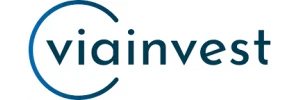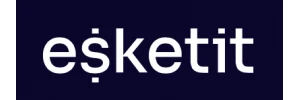Discover Financial Services: An Overview in the United States Market
Discover Financial Services, Inc., commonly known simply as Discover, has carved a significant niche within the competitive United States financial landscape. Launched by Sears in 1985 and later spun off as an independent publicly traded company in 2007, Discover has evolved into a leading direct banking and payment services provider. Its business model centers on offering a diverse array of financial products directly to consumers, including credit cards, deposit accounts, home equity loans, and its highly regarded unsecured personal loans.
The company targets a broad market segment, particularly middle-income consumers, individuals seeking debt consolidation solutions, and those who prefer a digital-first banking experience. Discover's revenue streams primarily derive from interest earned on its loan and credit card balances, merchant fees from its payment network, and various annual and service fees. A pivotal development in its recent history is the acquisition by Capital One, which finalized in May 2025. This strategic move is expected to integrate Discover's extensive network and customer base into Capital One's ecosystem, significantly bolstering its market presence as the third-largest United States card brand. This integration promises enhanced reach and potential synergies for existing and future customers.
Operationally, Discover emphasizes a customer-centric approach, underpinned by strong technological infrastructure. While it does not operate a network of physical branches for loan origination, its robust online platform and mobile application serve as the primary conduits for customer interaction, application processes, and account management. This digital-first strategy allows Discover to maintain efficiency and offer competitive products across the nation, appealing to a consumer base that increasingly values convenience and accessibility in their financial dealings.
Discover's Lending Products and Specific Terms in the United States
Discover offers several key lending products tailored to different consumer needs, with its unsecured personal loans being a flagship offering. Understanding the specific terms, rates, and fees associated with these products is crucial for any potential borrower in the United States.
Unsecured Personal Loans
Discover's unsecured personal loans are a popular choice for debt consolidation, home improvements, or other significant expenses, as they do not require collateral. The loan amounts range from US $2,500 to US $40,000, providing flexibility for various financial requirements. The Annual Percentage Rate (APR) for these loans is highly competitive, typically falling between 7.99% and 24.99%, depending on the borrower's creditworthiness. Repayment terms are also flexible, extending from 36 to 84 months, allowing borrowers to choose a payment schedule that aligns with their budget.
A significant advantage of Discover's personal loans is its fee structure. The company charges no origination fees, meaning borrowers do not incur an upfront cost for processing the loan. Furthermore, there are no prepayment penalties, allowing borrowers to pay off their loan early without extra charges, which can result in substantial interest savings. The only common fee associated with these loans is a $39 late payment fee, which can be avoided by making payments on time.
Home Equity Loans
For homeowners, Discover also provides home equity loans, which are secured by the borrower's property. These loans are typically offered for amounts starting at US $35,000. A key feature is the offering of fixed, low rates, providing predictability in monthly payments. Discover also promotes these loans with the benefit of zero cash due at closing, which can be an attractive aspect for those looking to access their home equity without immediate upfront costs. Terms and fees for home equity loans can vary more significantly than personal loans, as they are secured and often involve more complex underwriting.
Business Credit and Loans
While Discover is well-known for its consumer offerings, its business lending primarily revolves around credit cards. The Discover it® Business credit card offers a competitive 1.5% cash back on all purchases, without limits. However, it is important for small business owners to note that Discover does not publicly list dedicated term loans for businesses, focusing instead on card-based lending solutions for the small business segment.
Disbursement and Repayment
Loan funds, once approved, are efficiently disbursed via ACH bank transfer, often becoming available as soon as the next business day after the loan acceptance. Repayments are typically automated through ACH debits from the borrower's bank account, which can be conveniently managed through Discover's mobile application or website, ensuring a streamlined process for loan servicing.
Navigating the Discover Application and Digital Experience
Discover's commitment to a digital-first approach significantly shapes its application process and overall user experience. For potential borrowers in the United States, understanding these digital channels and procedures is key to a smooth journey.
Application and Onboarding Process
The application for Discover's loan products is primarily conducted through its digital platforms: the mobile app (available on iOS and Android) and the company's official website. Phone support is also available for assistance, but physical branches are not used for loan origination. The process typically begins with a prequalification step, which involves a soft credit pull. This allows applicants to see potential loan offers and rates without impacting their credit score. If an applicant proceeds with a full application, a hard credit inquiry is then initiated, which may temporarily affect their credit score.
Discover employs robust Know Your Customer (KYC) and Anti-Money Laundering (AML) protocols. These digital identity verification steps typically include providing personal details like an identification document, Social Security Number, and address verification. The company also conducts sanctions list screening and risk-based due diligence to comply with regulatory standards and ensure secure lending practices.
Credit Scoring and Underwriting
Discover utilizes a sophisticated, proprietary automated underwriting system. This system leverages various data points, including FICO® scores, the applicant's debt-to-income ratio, income stability, and overall credit history. To enhance its decision-making capabilities, Discover also integrates advanced AI partnerships, such as the ZestFinance ZAML platform, allowing for more precise risk assessment. While automation handles the majority of applications, a manual review process is in place for outlier cases or complex scenarios, guided by the traditional '5 C’s' framework of Character, Capacity, Capital, Collateral, and Conditions.
The Discover Mobile App and Website
The Discover Mobile app is a cornerstone of its digital strategy, highly rated by users (4.9 stars on the App Store and 4.3 stars on Google Play with over 10 million downloads). The app offers a comprehensive suite of features designed for convenience and control:
- Account Access: Secure login via a 4-digit PIN or Touch ID/Face ID.
- Payment Management: Easily manage and schedule loan repayments, credit card payments, and other account transfers.
- FICO® Score Monitoring: Free access to FICO scores, allowing users to track their credit health.
- Rewards Redemption: For credit card holders, seamless redemption of cashback rewards.
- Freeze It®: A unique feature allowing users to instantly freeze and unfreeze their Discover card to prevent unauthorized use.
- Spend Analyzer: Tools to categorize and analyze spending patterns.
- Zelle P2P: Peer-to-peer payment functionality for sending and receiving money.
- ATM Locator: Helps users find nearby no-fee ATMs within the Discover network.
The Discover website complements the mobile app, offering a full suite of online banking services, including loan origination, account management, and access to customer support resources. Both platforms are designed for intuitive navigation and a consistent user experience, reflecting Discover's commitment to digital accessibility.
Regulatory Landscape, Market Standing, and Customer Feedback
Operating within the highly regulated United States financial sector, Discover adheres to stringent guidelines while maintaining a significant market presence and generally positive customer perception.
Regulatory Status and Licensing
Discover Financial Services operates as a federally regulated entity. Its subsidiary, Discover Bank, is licensed by the Office of the Comptroller of the Currency (OCC) and its deposits are insured by the Federal Deposit Insurance Corporation (FDIC), providing a layer of security for deposit holders. The company is also subject to the oversight of the Consumer Financial Protection Bureau (CFPB), ensuring compliance with consumer protection laws. Discover strictly adheres to key federal regulations such as the Truth in Lending Act (TILA), the Fair Credit Reporting Act (FCRA), and the Bank Secrecy Act (BSA), which govern lending practices, credit reporting, and anti-money laundering efforts, respectively. As of recent reports, Discover has not faced any major public enforcement actions, indicating a strong compliance record.
Market Position and Competition
In the United States, Discover holds a strong market position, particularly within the credit card sector, where it is recognized as the third-largest brand, commanding approximately 8% of the market share. Its payment network, Discover Network and Pulse, boasts nationwide acceptance at over 4 million merchant locations and access to more than 60,000 no-fee ATMs. Discover competes with industry giants such as Visa, Mastercard, American Express, and its new parent company, Capital One.
Discover differentiates itself through several key aspects: its provision of fee-free personal loans (no origination or prepayment fees), its popular cashback rewards programs on credit cards, and its digital-first, customer-centric experience. The company’s advanced underwriting, often enhanced by artificial intelligence, also contributes to its competitive edge. Post-acquisition by Capital One, its strategic growth will likely involve further expansion of business card offerings and cross-selling within Capital One’s broader ecosystem, aiming to leverage the combined customer base of approximately 60 million cardholders.
Customer Reviews and Support
Discover generally enjoys a high level of customer satisfaction. It has consistently received top rankings in J.D. Power studies for credit card satisfaction, reflecting positive feedback on its service and product value. For its loan products, a 30-day money-back guarantee is offered, showcasing confidence in its offerings. Common customer complaints, while relatively few, sometimes include occasional app glitches, strict credit requirements for approvals, and the limited maximum loan amount for personal loans compared to some larger lenders. Discover provides robust customer support, including 24/7 service via its app, phone, and secure messaging, ensuring assistance is readily available.
Financially, Discover reported net revenue of approximately US $14.6 billion and a net income of US $2.8 billion in 2024, prior to its merger with Capital One. Its loan portfolio exceeds US $100 billion, diversified across credit cards, personal loans, and home equity, demonstrating significant financial stability and scale within the United States market.
Practical Advice for Potential Discover Borrowers in the United States
For individuals in the United States considering a loan from Discover, a thoughtful approach can help ensure the best possible outcome. As a financial expert, I offer the following practical advice:
1. Clearly Define Your Financial Need: Before applying, understand whether an unsecured personal loan or a secured home equity loan is more appropriate for your situation. Unsecured personal loans are versatile but typically carry higher interest rates than secured home equity loans, which use your property as collateral. If you are a homeowner with significant equity, a home equity loan from Discover could offer lower fixed rates and no closing costs.
2. Understand Interest Rates and Fees: Discover's unsecured personal loans offer APRs ranging from 7.99% to 24.99%. Your exact rate will depend heavily on your credit score and financial profile. Critically, Discover charges no origination fees and no prepayment penalties, which is a significant advantage. This means you only pay interest on the money you borrow and can save by paying off your loan early. Be mindful of the $39 late payment fee and ensure you can make timely payments to avoid it.
3. Assess Your Creditworthiness: Discover's underwriting process heavily relies on FICO scores, debt-to-income ratio, and credit history. Before applying, obtain a free copy of your credit report from each of the three major bureaus (Equifax, Experian, TransUnion) and review your FICO score. Addressing any inaccuracies or improving your score can significantly impact the APR you are offered. A strong credit profile is key to securing Discover's most favorable rates.
4. Utilize the Prequalification Process: Discover offers a prequalification option through its website and mobile app. This feature performs a soft credit pull, which does not affect your credit score, allowing you to see potential loan offers and terms. This is an excellent way to gauge your eligibility and compare potential rates before committing to a full application that involves a hard credit inquiry.
5. Leverage Discover's Digital Tools: Make the most of the Discover Mobile app and website. These platforms are designed for convenience, allowing you to manage your application, track your FICO score, make payments, and access customer support. Familiarize yourself with features like 'Freeze It®' for credit cards and the Spend Analyzer for managing finances efficiently.
6. Consider Repayment Terms Carefully: Discover offers personal loan terms from 36 to 84 months. While longer terms result in lower monthly payments, they also mean you pay more interest over the life of the loan. Choose a term that balances affordability with the total cost of borrowing. If you can comfortably afford higher payments, opt for a shorter term to minimize interest expenses.
7. Be Aware of Post-Acquisition Changes: With Discover now part of Capital One, monitor any communications regarding integration plans. While Discover's products and services are expected to largely remain consistent in the near term, future enhancements or changes could emerge from this strategic acquisition, potentially offering new benefits or affecting existing account management.
By following these pieces of advice, potential borrowers in the United States can approach Discover's lending solutions with confidence, making informed decisions that align with their personal financial goals and circumstances.








